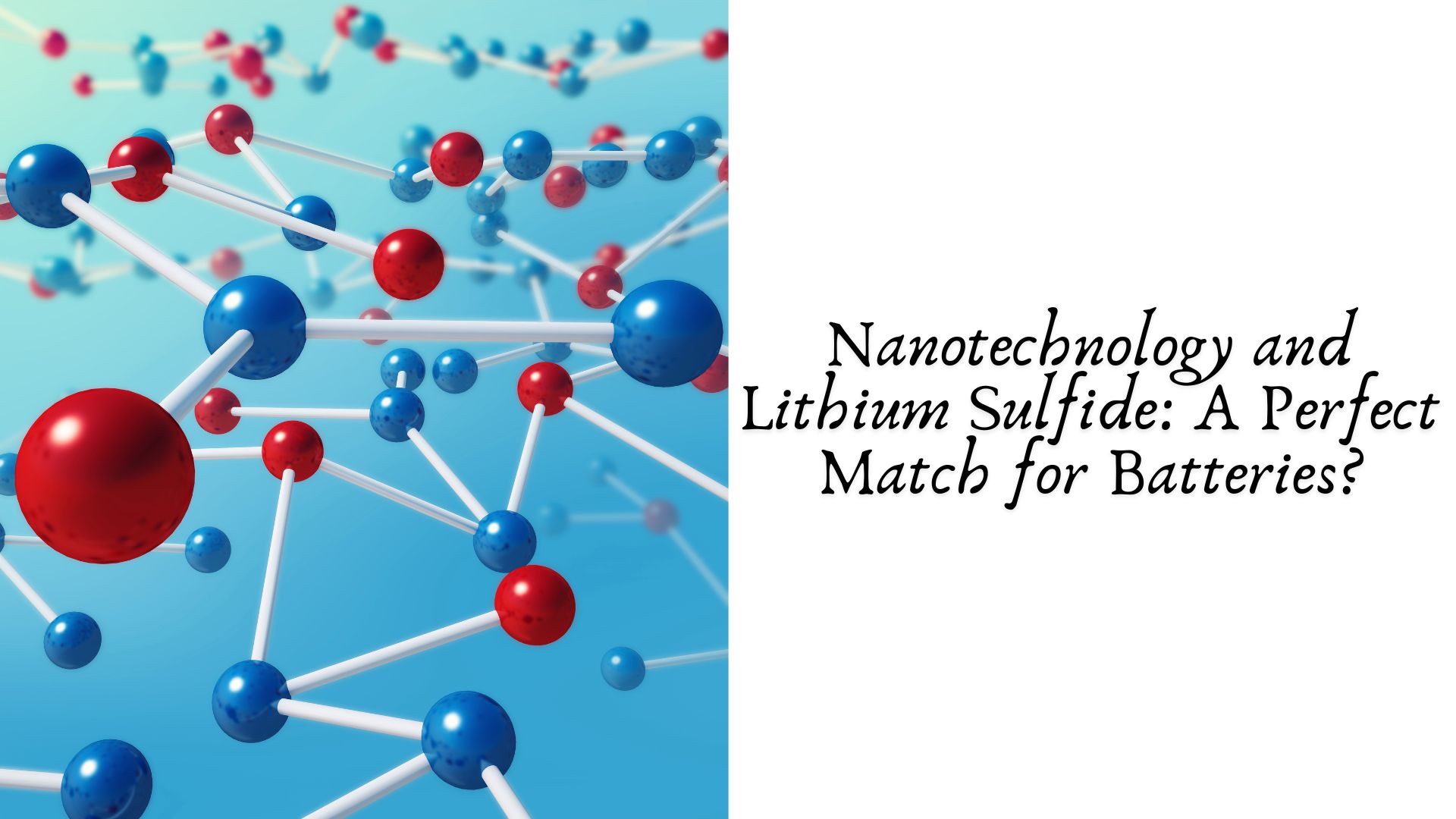Introduction
The search for next-generation battery technologies has led researchers to explore advanced materials that can enhance energy storage, longevity, and performance. Among the promising candidates, lithium sulfide (Li2S) has emerged as a key material for high-energy-density batteries. When combined with nanotechnology, lithium sulfide-based batteries could revolutionize energy storage, offering higher capacities and improved stability compared to traditional lithium-ion batteries.
Understanding Lithium Sulfide in Batteries
Lithium sulfide is a crucial component in lithium-sulfur (Li-S) batteries, which are seen as a potential successor to conventional lithium-ion batteries. Unlike conventional cathodes, lithium sulfide provides a higher theoretical capacity (1166 mAh/g), making it a desirable material for high-energy applications, including electric vehicles and grid storage. However, its practical application has been limited by challenges such as poor conductivity, polysulfide dissolution, and structural degradation during charge cycles.
Role of Nanotechnology in Enhancing Lithium Sulfide Batteries
Nanotechnology has played a crucial role in overcoming the limitations of lithium sulfide, enabling researchers to design innovative battery architectures. Here’s how nanotechnology enhances lithium sulfide batteries:
Improved Conductivity
Lithium sulfide suffers from poor electrical conductivity, which restricts its electrochemical performance. By employing nanoscale engineering techniques, researchers have developed nanostructured Li2S composites that enhance electron transport and increase charge efficiency. Carbon nanostructures such as graphene, carbon nanotubes, and nanospheres have been successfully integrated with Li2S to improve conductivity.
Polysulfide Stabilization
One of the biggest challenges with lithium-sulfur batteries is the dissolution of polysulfides into the electrolyte, leading to capacity fade and reduced cycle life. Nanotechnology enables the design of protective coatings and nanoencapsulated materials that prevent polysulfide shuttling. Metal-organic frameworks (MOFs), polymer coatings, and nanoporous membranes have been explored to mitigate this issue.
Enhanced Structural Integrity
During charge and discharge cycles, lithium sulfide undergoes significant volume expansion, leading to mechanical stress and cathode degradation. Nanoscale materials with high mechanical strength, such as silicon nanoparticles and nanostructured carbon, help to maintain electrode integrity and improve cycling stability.
Fast Ion Transport
Nanostructuring Li2S electrodes increases the surface area, shortening ion diffusion paths and accelerating charge transfer. This improves the overall power density and efficiency of the battery, making it more suitable for high-performance applications like electric vehicles and aerospace technologies.
Potential Applications of Li2S Nanotechnology Batteries
The synergy between lithium sulfide and nanotechnology has the potential to impact various industries, including:
- Electric Vehicles (EVs): The high energy density of Li2S batteries could extend the driving range of electric cars while reducing weight.
- Renewable Energy Storage: Grid-scale energy storage for solar and wind power could benefit from the improved longevity and stability of these batteries.
- Portable Electronics: Smartphones, laptops, and other devices could achieve longer battery life with lightweight Li2S-based batteries.
- Aerospace and Defense: High-performance batteries with enhanced power density could support satellite and defense applications.
Challenges and Future Directions
Despite the promising advancements in nanotechnology-enhanced lithium sulfide batteries, several challenges remain:
- Scalability: Manufacturing nanoscale materials at a commercial scale remains a significant hurdle.
- Cycling Stability: Further improvements are needed to enhance long-term performance and prevent degradation.
- Cost-effectiveness: The use of advanced nanomaterials can increase production costs, which must be optimized for commercial viability.
Researchers are actively working on scalable synthesis methods, solid-state electrolyte integration, and advanced coating techniques to address these issues. With continued progress, lithium sulfide batteries enhanced by nanotechnology could become a game-changing solution for the future of energy storage.
Conclusion
The combination of lithium sulfide and nanotechnology presents a compelling path forward in the evolution of battery technology. By addressing critical challenges such as conductivity, structural integrity, and polysulfide dissolution, nanotechnology has the potential to unlock the full capabilities of lithium sulfide-based batteries. As research continues to refine and optimize these technologies, we may soon see them powering the next generation of electric vehicles, consumer electronics, and renewable energy systems.









